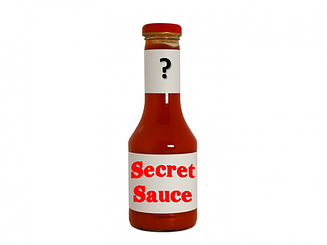Minimizing costs has been and always will be a critical component of industrial strategy. The growing global supply chain helps to improve operating margins, but in many ways, its complexities make it more difficult to compete. Additionally, regulatory burdens, among other areas, further shrink operating margins. Faced with pressure, managers are continuously looking for innovative solutions to improve financial and operational performance.
As companies search for ways to cut costs, none may be more easily attainable than simply altering the formulation of the product. By decreasing product quality specifications, companies can quickly improve operating margins. However, this is essentially cutting a corner, and when it comes to quality, you can only cut so many corners before it begins to affect business performance. In a recent conversation with a large Consumer Products company, we discussed the challenges associated with balancing cost and product quality.
In this blog, we'll discuss the relationship between quality, cost, and product formulations, especially as it relates to Consumer Products companies.
The Cost-Quality-Formulation Relationship
We've written a number of blog posts on measuring Cost of Quality, advising companies on the value of the metric. It's true, companies that measure the Cost of Quality are, on average, more successful in other operational KPIs. Unfortunately, however, there are pitfalls as well, especially around product quality and the dreaded downward cycle of recipes and formulations.
It can be very easy for companies looking for quick cost savings to start altering product formulations. Take the food and beverages industry for example. This can include reductions in key ingredients (like fats, solids, or natural flavorings), substitution in key ingredients (likely with artificial stabilizers or emulsifiers), changes in packaging, and more. From a strict Cost of Quality analysis perspective, these changes will likely have no impact. In fact, it may even create a reduction in the Cost of Quality. Often, artificially stabilized and emulsified products have fewer defects, reduced fill weight issues, and longer shelf life.
However, in the eyes of the consumer, these products may be of a much lower quality. Consumers don't think in terms of "Cost of Quality". Instead, consumers have a sense of quality associated with a particular brand and can be extremely sensitive to formulation changes. So what should a company do when evaluating formulations and potential options for change. For many, it may be useful to start taking a closed loop quality management approach that integrates PLM and quality.
Closed Loop Quality Management
Feedback loops are an important part of ensuring product quality in the eyes of the consumer. Defects and quality issues often arise well past the stage in the value chain where the root cause resides. This means companies must flow information across functional groups to ensure corrective and preventive actions are effectively implemented. Unfortunately, companies typically don't also include formulation changes, recipe changes, or engineering change orders in this analysis.
In many cases, a product may be changed based on an economic analysis, eventually causing increases in customer complaints, but not causing a non-conformance because the product is within the "new" specification. In these cases, companies lose a valuable opportunity to learn about customers and what they value about the products. This is clearly a challenge for many companies and there is no quick nor easy solution.
Our recommendation, don't only focus on quality as it relates to non-conformance to product specifications. Instead, closed loop quality management is a valuable approach to help flow information through the organization and it's most valuable when it includes changes to product formulations, recipes, and bill of materials.
Is this an issue that your company is currently dealing with? If so, we would be interested in hearing more about the approaches you have taken in solving the problem. This is an interesting and emerging area of quality management and we're still a long way from establishing widely adopted best practices.
You might also be interested in:
Top 5 Challenges in the Consumer Products Industry
Improving Food Safety: Insights from Mars' and Dole's Product Recalls
Manufacturing Operations Management: Lessons from Dell

